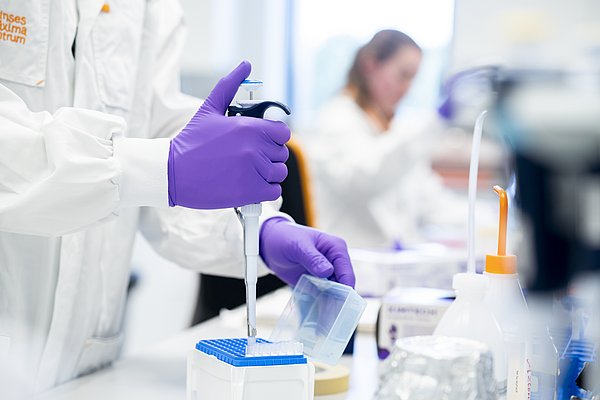The “Hopp Children's Cancer Center Heidelberg” (KiTZ) is a joint institution of the German Cancer Research Center (DKFZ), Heidelberg University Hospital (UKHD) and Heidelberg University (Uni HD).
Rhabdoid tumors of the central nervous system (CNS), also known as atypical teratoid/rhabdoid tumors (AT/RT), are rare, aggressive, fast-growing embryonal tumors that occur almost exclusively in infants and young children. The tumor is usually caused by a dysfunction of the SMARCB1 gene, which is an important brake on the development of cancer. To date, three molecular subtypes of ATRTs have been discovered, but there is a lack of treatments specifically tailored to these subgroups.
The research team led by Marcel Kool and Jarno Drost, both research group leaders at the Princess Máxima Centrums in Utrecht and Kool also at the Hopp Children's Cancer Center Heidelberg (KiTZ), and German Cancer Research Center (DKFZ), mapped the gene activity in the different tumor subtypes to understand on a cellular level how the different subtypes develop. Drost explains: "We found that each ATRT subtype follows its own developmental pathway, similar to the way different brain cells arise during early fetal development. Using mini-tumors cultivated in the laboratory from patient samples, the scientists and the first author of the study, Enrique Blanco Carmona, investigated whether the genetic program and thus the development of the cancer cells can be steered in a certain direction.
The addition of certain inhibitors caused the cells to divide more slowly, grow less aggressively and also more closely resemble mature “normal” brain cells in their genetic program. “This means that the development of ATRT cells can be controlled,” says Kool. “The results provide us with new clues for new therapies that are specifically tailored to the subtype and maturation state of the tumor.”
The research was made possible and funded in part by the collaboration between PMC and KITZ as part of the EU CAN KIDS Alliance (European Alliance for a Childhood Without Cancer), the European Research Council, the Netherlands Research Council (NWO) and the Children Cancer-Free Foundation (KiKa).
Original publication:
E. Blanco-Carmona et al. A cycling, progenitor-like cell population at the base of atypical teratoid rhabdoid tumor subtype differentiation trajectories. In: Journal of Neuro-Oncology (Online publication September 2, 2025). DOI: https://doi.org/10.1093/neuonc/noaf179




